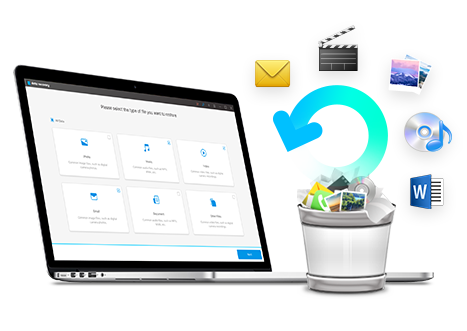If you are an Apple user, you would probably know that when you install OS X (Lion or higher), it will automatically create a hidden recovery volume on your startup drive. This is so that when you encounter an emergency, you will be able to recover your device easily with "Disk Utility" to repair a damaged hard drive, find information about your device's problem online, restore your device to its previous settings or reinstall OS X. To further enhance your user experience, Apple lets you have a physical copy of OS X Recovery USB drive created with Disk Assistant.
- What is needed to create an OS X Recovery USB drive
- How to create OS X Recovery drive with Disk Assistant
It is a great option to have because if your drive is brutally damaged, there is a possibility of not being able to use the recovery volume and you don not necessary have an internet connection all the time. Therefore, having a physical copy would be like an insurance for your devices. Read on our side-by-step guide to help you create OS X Recovery disk with Disk Assistant on a USB stick.
Part 1 What is needed to create an OS X Recovery USB drive?
In order to create an OS X Recovery USB drive, you will need a few things:
- A working recovery volume on your operating system startup drive--this is the source from where you will create a copy of the volume
- A USB drive with at least 1GB storage space.
Do note that if you do not have a working recovery volume on your device, you will not be able to follow through with these instructions.
Do also remember that these instructions will not work if you have an older device model that is currently running on a newer operating system.
Part 2 How to create OS X Recovery drive with Disk Assistant
When you clone the recovery volume on any partitions listed in "Disk Utility", any data in the destination volume will be deleted. Therefore, it is a good idea to prepare the USB drive before you create OS X Recovery drive with Disk Assistant, especially if there is a large amount of storage space in the USB drive. Create partitions in the new destination so that you will be able to have a dedicated section for the recovery volume.
Once you have prepped the new destination,if needed, follow these steps to get you on the way of owning a physical OS X Recovery disk created with Disk Assistant.
Setp 1. Get the Disk Assistant, if needed

Go to Applications > Utilities to see if the "Recovery Disk Assistant" is not available in the folder. If it is not, download it from Apple's Support website. Wait for the download to complete and double-click on the "RecoveryDiskAssistant.dmg" file in the "Downloads" folder. It will create a file named "Recovery Disk Assistant.app" into the "Applications" folder.
Setp 2. Select the new drive

Connect a USB drive to your device and launch "Recovery Disk Assistant". You will need to agree to the terms and conditions and wait until the wizard detects the external drives. Select the new recovery disk i.e. the USB drive you connected to your computer and click on the "Continue" button.
Setp 3. Eject and keep the USB safe

It should not take long for the system to create a clone of the original recovery volume. It will prompt you when it is done so that you can click the "Quit" button to eject the USB drive. Make sure you keep the USB drive somewhere safe and easily accessible.
Since the introduction of OS X Lion, Apple did away with recovery disks, but we know that while this is super convenient for many, having an actual recovery disk can be beneficial at times. This is the simplest and fastest solution to have available to you anytime, anywhere.

- Recover lost or deleted files, photos, audio, music, emails from any storage device effectively, safely and completely.
- Supports data recovery from recycle bin, hard drive, memory card, flash drive, digital camera and camcorders.
- Supports to recover data for sudden deletion, formatting, hard drive corruption, virus attack, system crash under different situations.
- Preview before recovery allows you to make a selective recovery.
- Supported OS: Windows 10/8/7/XP/Vista, Mac OS X (Mac OS X 10.6, 10.7 and 10.8, 10.9, 10.10 Yosemite, 10.10, 10.11 El Capitan, 10.12 Sierra) on iMac, MacBook, Mac Pro etc.
Hard Drive Recovery
- Wiederherstellen von Daten aus verschiedenen Festplattentypen +
- Reparieren Sie Ihre Festplatte +
- Recover externe Festplatte +
-
- Externe Festplatte Recovery
- Seagate externe Festplatte Recovery
- WD Externe Festplatte Recovery-Datei
- Freecom eine externe Festplatte Recovery
- externe Festplatte Recovery Buffalo
- G-Technology externes Fest rrive Erholung
- Fantom externe Festplatte Datenrettung
- Wiederherstellen von Dateien von abgestürzten externer Festplatte
- Wiederherstellen von Daten von der Festplatte / Festplatten +
-
- Linux-Festplatte Recovery
- Laptop Datenwiederherstellung
- Partition Recovery
- Seagate Expansion Datenwiederherstellung
- WD My Passport Erholung
- Lacie dard Platte Datenrettung
- WD Element Datenwiederherstellung
- Dell Recovery-Festplattendaten
- Acomdata harten Daten-Recovery-Laufwerk
- Fujitsu Festplatte Datenrettung
- Iomega Festplatten Wiederherstellung
- Toshiba ändern Data Recovery
- Micronet Datenwiederherstellung
- Wiederherstellen von Daten von verschiedenen Geräten +
-
- Rocster Datenwiederherstellung
- Buslink Datenwiederherstellung
- Crucial M4 Datenwiederherstellung
- Kalvarienberg Festplatte Datenrettung
- Simpletech Festplatte Datenrettung
- Kingston SSD Erholung
- Apricorn Aegis Datenwiederherstellung
- HP Datenfestplatte Recovery
- Maxtor Festplatte Datenrettung
- Hitachi Festplatte Datenrettung
- Toshiba Festplatte Datenrettung
- Panasonic Festplatte Datenrettung
- Speichern Sie Ihre Festplatte +
- Wiederherstellen von Daten von Mac OS +
- Probleme mit der Festplatte +






